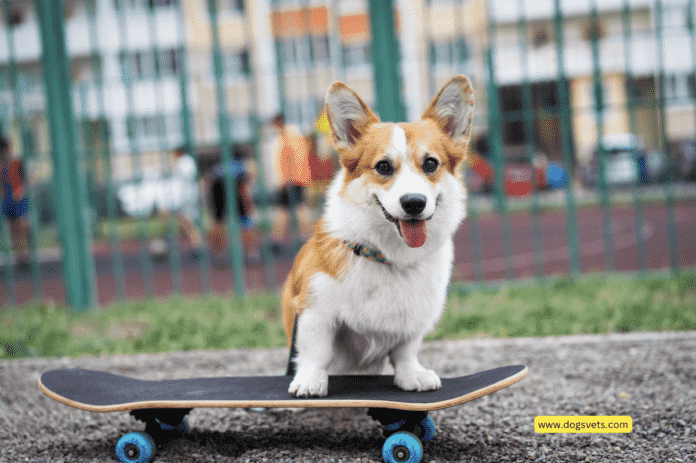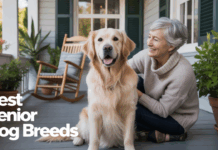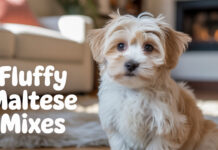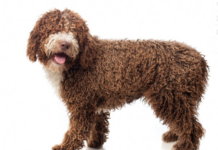Last Updated on December 10, 2023 by Dogs Vets
When to Spay or Neuter Your Corgi: Expert Advice
When it comes to the well-being of our furry companions, particularly Corgis, the decision to spay or neuter can be pivotal.
This procedure, often seen as a routine part of pet care, carries a multitude of benefits, both health-related and behavioral. But when is the right time to take this step?
Understanding the optimal timing for spaying or neutering your Corgi is crucial for their long-term health and happiness.
In this comprehensive guide, we delve into the intricacies of spaying and neutering, specifically for Corgi breed owners.
We aim to provide you with expert insights and advice to make an informed decision. Whether you’re a new Corgi parent or looking to broaden your knowledge, this article is tailored for you.
Understanding Spaying and Neutering
What Are Spaying and Neutering?
Spaying (for females) and neutering (for males) are surgical procedures performed by veterinarians to sterilize pets. These procedures prevent unwanted litters, contributing to a decrease in pet overpopulation.
Benefits of Spaying and Neutering
- Health Benefits: Reduces the risk of certain cancers and infections.
- Behavioral Improvements: Decreases aggression and roaming tendencies.
- Population Control: Helps in reducing the number of homeless pets.
When to Spay or Neuter Your Corgi
Age Considerations
Determining the right age to spay or neuter your Corgi is crucial for their development and health. The general recommendation is to perform this procedure when the dog is between 6 to 9 months old.
This age range is considered optimal as it precedes the onset of puberty, thus mitigating the risk of unwanted behaviors and health issues associated with sexual maturity.
However, this timeframe isn’t a one-size-fits-all solution. Factors such as the dog’s individual growth rate, breed-specific characteristics, and overall health condition play a significant role.
For example, some Corgis may develop faster or slower than others, affecting the ideal timing for surgery. It’s also worth noting that Corgis, being a dwarf breed, have unique physiological traits that may influence the decision.
Health Assessments
Before scheduling the procedure, it’s essential to have a thorough health assessment of your Corgi. Consulting your veterinarian is a step you shouldn’t skip. During this consultation, the vet will conduct a comprehensive check-up, considering factors like:
- Overall Health: Ensuring the dog is in good health and fit for surgery.
- Weight and Growth: Evaluating if the dog has reached a suitable size and weight for its age, which can influence surgical risk.
- Breed-Specific Needs: Discussing any breed-specific concerns that might affect the timing or method of the procedure. For instance, Corgis are prone to certain orthopedic conditions, and the vet might assess how the surgery could impact these potential issues.
- Pre-Operative Tests: Conducting blood tests or other diagnostics to ensure the dog is ready for anesthesia and surgery.
This personalized approach ensures that the decision to spay or neuter your Corgi is made with their best interests in mind. The vet’s recommendation will be based on a combination of general guidelines and the specific needs of your pet.
This way, you can rest assured that the timing of the procedure aligns with your Corgi’s health and well-being, ultimately contributing to a smoother recovery and a healthier life.
Post-Operative Care
Corgi Post-Surgery Recovery
Helping Your Corgi Heal Comfortably and Quickly
After your Corgi undergoes surgery, it’s essential to provide them with the optimal environment to promote a smooth and successful recovery.
This guide will help you navigate this crucial period and ensure your furry friend gets back to their happy, healthy self as soon as possible.
Quiet and Comfort:
- Cozy Environment: Create a calm and quiet space for your Corgi to rest and recover. This could be a designated area in your home, away from loud noises and excessive activity.
- Comfy Bedding: Provide a comfortable bed with soft bedding that allows your Corgi to rest comfortably without pressure on their incision site.
- Temperature Control: Maintain a comfortable room temperature (68-75°F or 20-24°C) to avoid chills or overheating.
- Minimize Stress: Avoid introducing new people or animals to your Corgi during the initial recovery period, as this can cause unnecessary stress and hinder their healing.
Diet and Exercise:
- Diet: Follow your veterinarian’s instructions regarding your Corgi’s diet during their recovery. This may involve changes in portion size, food type, or frequency of feeding.
- Limited Exercise: Restrict your Corgi’s activity as instructed by your vet. This typically involves avoiding strenuous activity, such as running, jumping, and playing fetch. Short leash walks for bathroom breaks are usually permitted.
- Hydration: Ensure your Corgi has access to fresh, clean water at all times.
Monitoring and Incision Care:
- Incision Site: Check your Corgi’s incision site regularly for any signs of infection, such as swelling, redness,discharge, or odor.
- Pain Management: Administer pain medication as prescribed by your veterinarian to keep your Corgi comfortable during the healing process.
- Prevent Licking: Discourage your Corgi from licking or chewing their incision site, as this can delay healing and increase the risk of infection. Utilize an Elizabethan collar (“cone”) if necessary.
Returning to Normal Activities:
- Gradual Increase in Activity: Slowly increase your Corgi’s activity level as they heal, based on your veterinarian’s recommendations.
- Regular Checkups: Schedule follow-up appointments with your veterinarian to monitor your Corgi’s progress and address any concerns.
Additional Tips:
- Keep your Corgi’s weight stable.
- Provide mental stimulation through gentle interactive toys or puzzle feeders.
- Maintain a regular grooming routine.
- Be patient and understanding during your Corgi’s recovery process.
By following these guidelines and closely monitoring your Corgi’s condition, you can ensure a comfortable and speedy recovery for your furry loved one. Remember, your veterinarian is your primary source of information and guidance during this time.
Corgi-Specific Considerations for Spaying and Neutering
While spaying and neutering are generally beneficial for all dogs, there are some breed-specific considerations for Corgis. These considerations stem from the unique physical characteristics and health risks associated with the breed.
Here are some key points to discuss with your veterinarian before spaying or neutering your Corgi:
- Delayed Growth Plate Closure: Corgis typically have later growth plate closure compared to other breeds. This necessitates waiting until they reach 18 months of age or later to ensure their musculoskeletal system develops fully. Spaying or neutering too early can affect bone growth and development, leading to long-term issues like joint problems.
- Susceptibility to Obesity: Corgis are prone to obesity due to their short legs and stocky build. Spaying or neutering can further increase this risk by altering their metabolism. Maintaining a healthy diet and engaging in regular exercise is crucial for preventing obesity in Corgis.
- Increased Risk of Certain Health Conditions: Corgis are at an increased risk of certain health conditions,including intervertebral disc disease (IVDD), hip dysplasia, and hypothyroidism. While spaying or neutering may not directly cause these conditions, it’s important to be aware of the potential risks and discuss them with your veterinarian.
Myths vs. Facts: Dispelling Common Misconceptions about Spaying and Neutering
Many myths and misconceptions surround spaying and neutering, which can lead to confusion and hesitation among pet owners. Here are some common myths and the corresponding facts:
Myth: Spaying or neutering will make my Corgi lazy and overweight.
Fact: While spaying or neutering can slightly decrease metabolism, it’s primarily diet and exercise that determine a dog’s weight. Maintaining a healthy diet and ensuring adequate physical activity for your Corgi will keep them at a healthy weight.
Myth: Spaying or neutering will change my Corgi’s personality.
Fact: While spaying and neutering can lessen sex-related behaviors like roaming and aggression, it does not significantly impact a dog’s overall personality.
Myth: Spaying or neutering will prevent my Corgi from being a good working dog.
Fact: Spaying or neutering does not affect a dog’s intelligence, trainability, or ability to work. Many successful working dogs are spayed or neutered.
It’s crucial to remember that spaying and neutering offer several significant benefits for both your Corgi and the community. These include:
- Reduced risk of reproductive cancers: Spaying significantly reduces the risk of mammary tumors and eliminates the risk of uterine infections and pyometra. In males, neutering decreases the risk of testicular cancer and prostate diseases.
- Improved behavior: Spaying and neutering can help curb unwanted behaviors like roaming, spraying, and aggression. This can make your Corgi a more enjoyable and adaptable companion.
- Reduced pet overpopulation: Spaying and neutering prevent unwanted litters, which contribute to pet overpopulation and euthanasia in shelters.
Professional and Owner Perspectives
Veterinarian Insights
Veterinary professionals provide valuable insights based on years of experience.
Real Owner Experiences
Hear from Corgi owners who have gone through the process.
Alternatives and Additional Considerations
Explore alternative methods and additional factors to consider before making the decision.
Conclusion
Making the decision to spay or neuter your Corgi is a significant step in ensuring their long-term health and well-being.
By understanding the right timing and considerations specific to the breed, you can make an informed choice that benefits both you and your furry friend.
FAQs
At what age should I spay or neuter my Corgi?
A: Between 6 to 9 months, depending on individual health factors.
Are there any risks associated with spaying or neutering?
Like any surgery, there are risks, but they are generally minimal.
How long is the recovery period?
Recovery typically takes around 10-14 days.
Will my Corgi’s behavior change after the procedure?
You may notice a reduction in aggressive or roaming behaviors.
Is spaying/neutering painful for the pet?
Pain is managed effectively through anesthesia and post-operative care.
Can I spay or neuter my Corgi at any age?
It’s recommended at a young age, but consult your vet for age-specific advice.
Will my Corgi gain weight after the procedure?
Weight gain can be managed with proper diet and exercise.
Verified Source References
- American Veterinary Medical Association
- The Humane Society of the United States
- Corgi Owners’ Forums and Communities
Fact Check
We strive to provide the latest valuable information for pet lovers with accuracy and fairness. If you would like to add to this post or advertise with us, don’t hesitate reach us. If you see something that doesn’t look right, contact us!

















